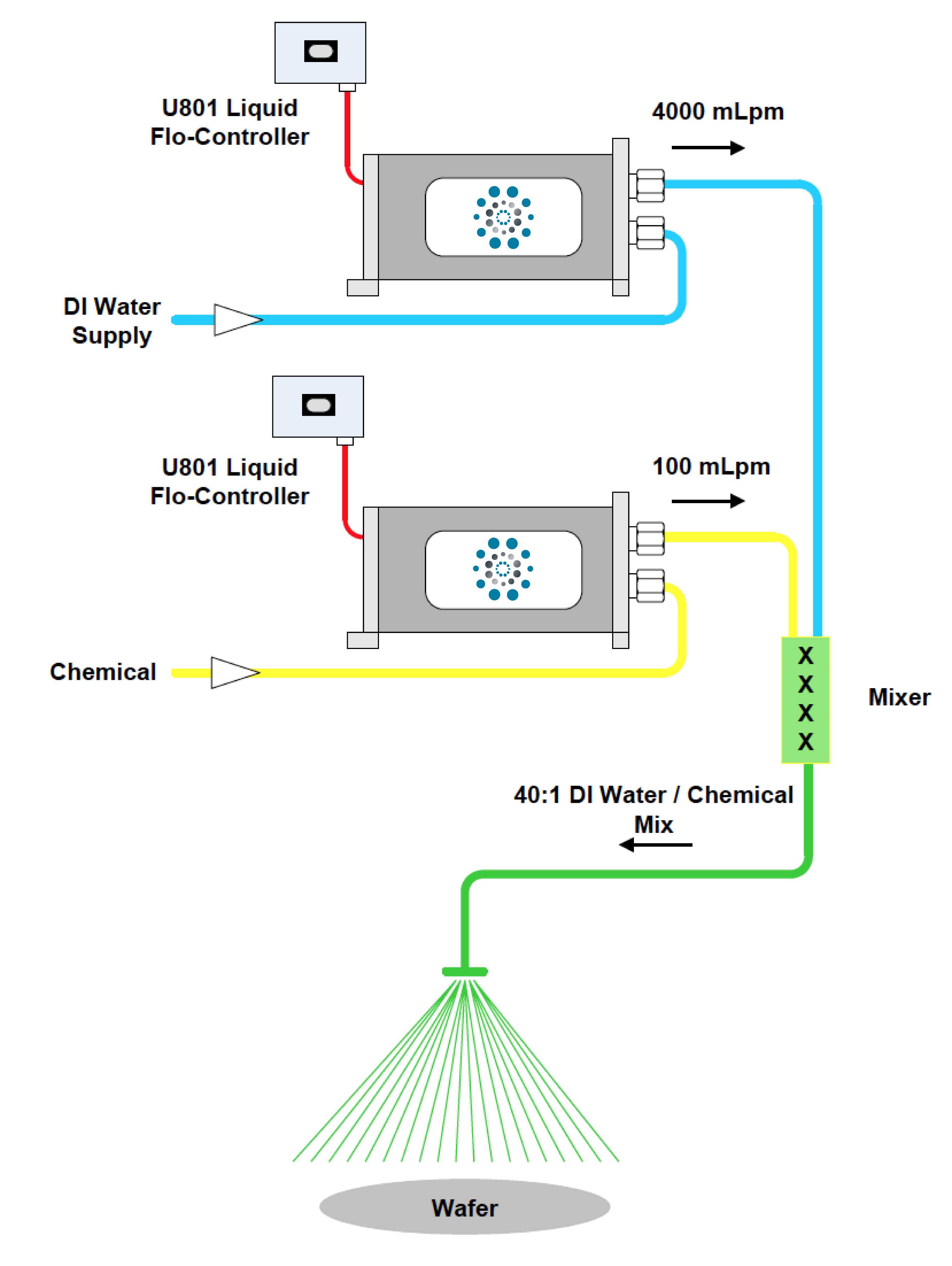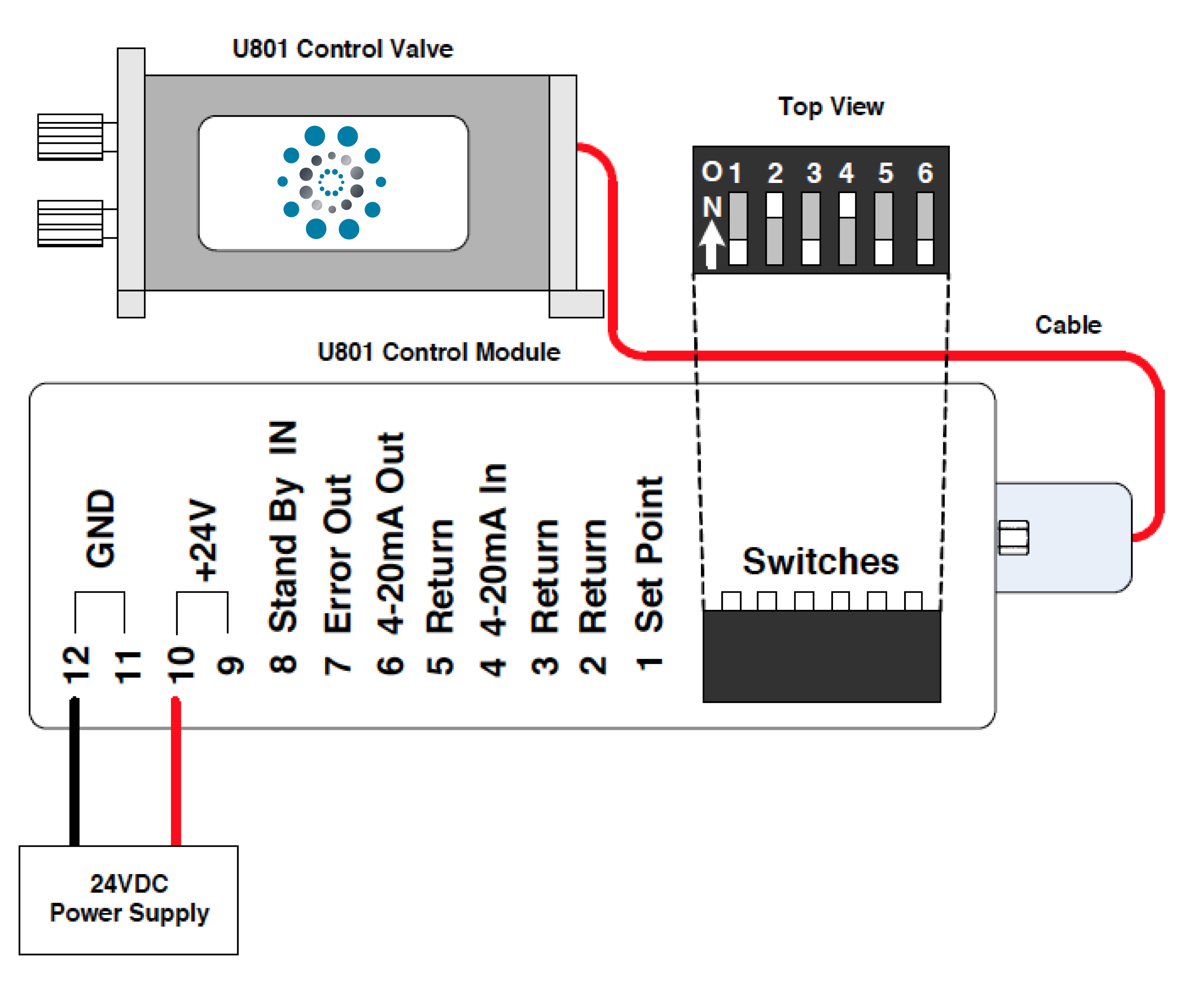APPLICATION
A semiconductor production facility has numerous chemical mechanical planarization
(CMP) tools. At various times during the CMP process, fluids are delivered to the wafer for
polishing or rinsing using a pressurized chemical system. During the rinse phase a
chemical (acid or ammonia) is diluted 40:1 with deionized water*.
MCMILLAN PRODUCTS UTILIZED
U801 Liquid Flo-Controllers
DESCRIPTION
McMillan Liquid Flo-Controllers combine smart electronics with a precision control valve
and flow sensor. The output from the flow sensor is analyzed and compared to the flow
rate set point. The control valve is then automatically adjusted to achieve the required
flow.
OPERATION
Deionized water and the chemical are mixed downstream of the Model U801 Flo-
Controllers then delivered to the wafer. The U801’s use an external setpoint, output
signal and standby mode for process control and monitoring. Standby mode overrides
control functions and freezes the valve position, only flow output signals are provided.
Normal operation resumes when standby is disengaged.
ADVANTAGES
Model U801 Liquid Flo-Controllers provide consistent flow regardless of small pressure
changes and can be configured for available system pressure**. The control module has
an LCD display, status and standby LED indicators for visual reference. DIP switches on
the control module allow the user to view flow, choose internal or external setpoint and
manually activate standby mode. The benefits include a reduction in process costs,
reduced maintenance and improved consistency.
DIAGRAM
Figure 1 illustrates the flow path of the fluid system. Figure 2 illustrates the wiring of the system.
FIGURE 1 – Flow Path of Fluid System

FIGURE 2 – System Wiring

*Dilution ratio varies, 40:1 is typical
**See Technote: U801/U802 Guide to Selecting Flow Ranges and Pressure Configurations

